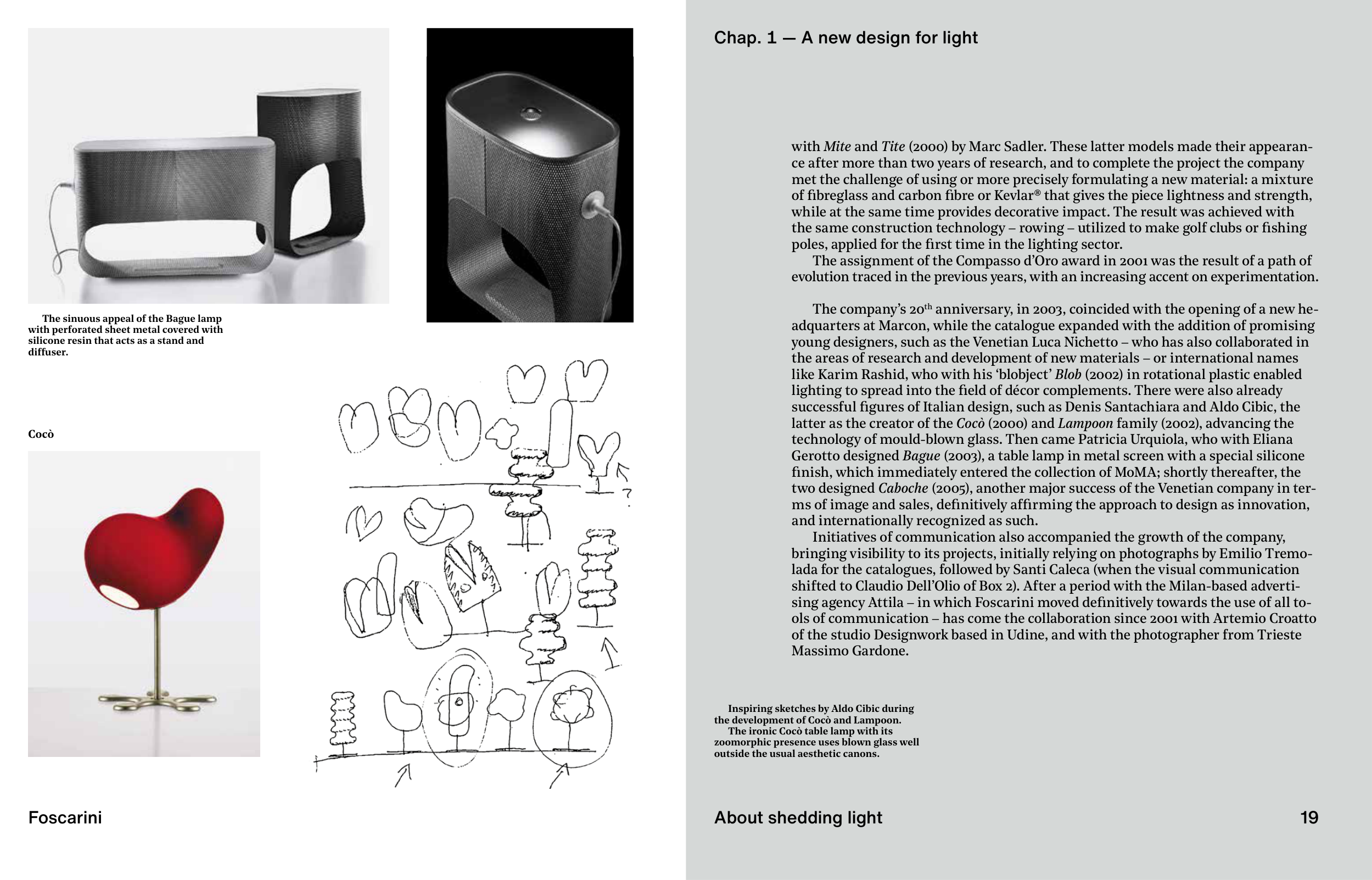19
Foscarini
Chap. 1 — A new design for light
with Mite and Tite (2000) by Marc Sadler. These latter models made their appearan-
ce after more than two years of research, and to complete the project the company
met the challenge of using or more precisely formulating a new material: a mixture
of fi breglass and carbon fi bre or Kevlar® that gives the piece lightness and strength,
while at the same time provides decorative impact. The result was achieved with
the same construction technology – rowing – utilized to make golf clubs or fi shing
poles, applied for the fi rst time in the lighting sector.
The assignment of the Compasso d’Oro award in 2001 was the result of a path of
evolution traced in the previous years, with an increasing accent on experimentation.
The company’s 20th anniversary, in 2003, coincided with the opening of a new he-
adquarters at Marcon, while the catalogue expanded with the addition of promising
young designers, such as the Venetian Luca Nichetto – who has also collaborated in
the areas of research and development of new materials – or international names
like Karim Rashid, who with his ‘blobject’ Blob (2002) in rotational plastic enabled
lighting to spread into the fi eld of décor complements. There were also already
successful fi gures of Italian design, such as Denis Santachiara and Aldo Cibic, the
latter as the creator of the Cocò (2000) and Lampoon family (2002), advancing the
technology of mould-blown glass. Then came Patricia Urquiola, who with Eliana
Gerotto designed Bague (2003), a table lamp in metal screen with a special silicone
fi nish, which immediately entered the collection of MoMA; shortly thereafter, the
two designed Caboche (2005), another major success of the Venetian company in ter-
ms of image and sales, defi nitively affi rming the approach to design as innovation,
and internationally recognized as such.
Initiatives of communication also accompanied the growth of the company,
bringing visibility to its projects, initially relying on photographs by Emilio Tremo-
lada for the catalogues, followed by Santi Caleca (when the visual communication
shifted to Claudio Dell’Olio of Box 2). After a period with the Milan-based adverti-
sing agency Attila – in which Foscarini moved defi nitively towards the use of all to-
ols of communication – has come the collaboration since 2001 with Artemio Croatto
of the studio Designwork based in Udine, and with the photographer from Trieste
Massimo Gardone.
About shedding light
19
Inspiring sketches by Aldo Cibic during
the development of Cocò and Lampoon.
The ironic Cocò table lamp with its
zoomorphic presence uses blown glass well
outside the usual aesthetic canons.
Cocò
The sinuous appeal of the Bague lamp
with perforated sheet metal covered with
silicone resin that acts as a stand and
diffuser.


